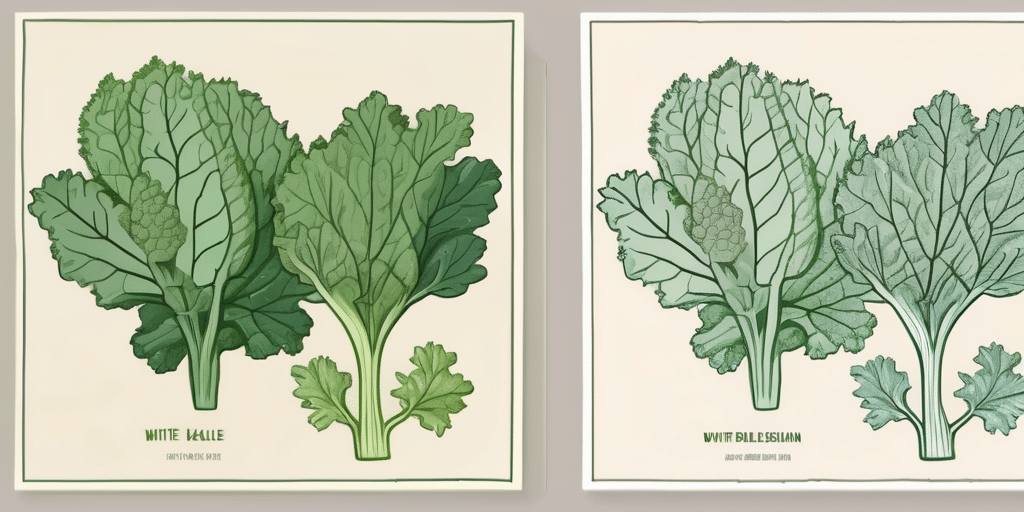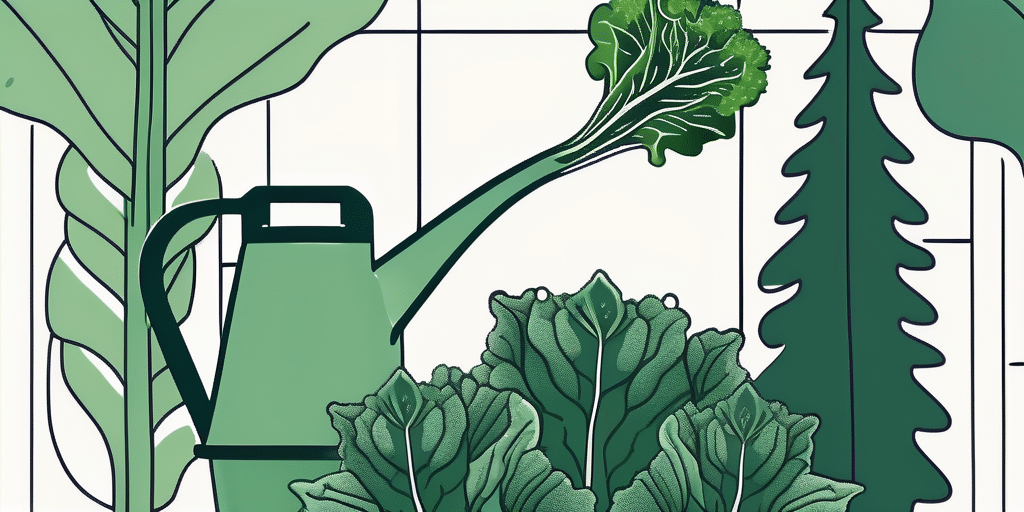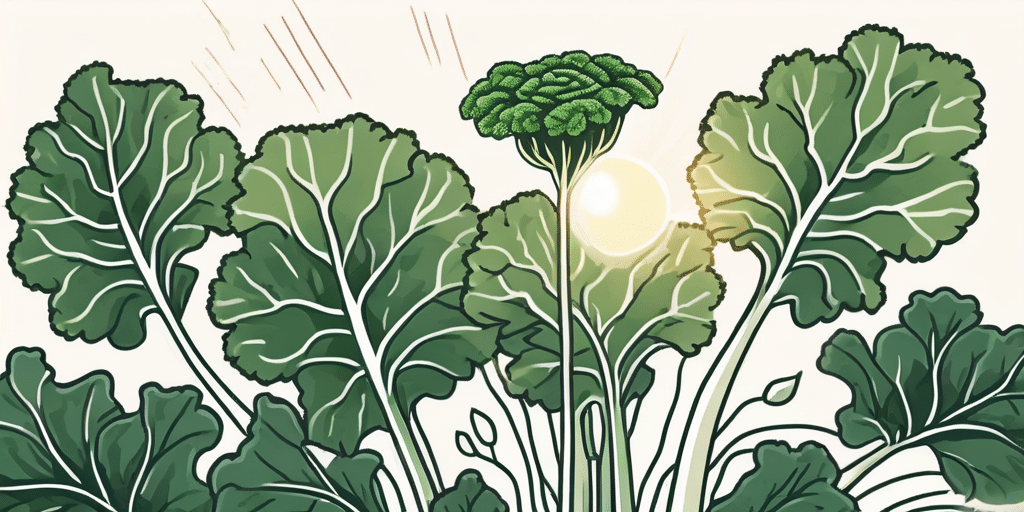Redbor kale is a beautiful and nutritious leafy vegetable that can be grown in Ohio’s climate. In this article, we will explore when to plant Redbor kale in Ohio and how to grow it successfully. We’ll also provide helpful tips on when to harvest or pick this vibrant and flavorsome green.
Climate & Hardiness Zones in Ohio
Before diving into the details of growing Redbor kale, it’s important to understand the climate and hardiness zones in Ohio. The state of Ohio generally falls under USDA hardiness zones 5 and 6. This means that the average minimum temperatures range from -20°F (-29°C) to 0°F (-18°C) in Zone 5 and from 0°F (-18°C) to 10°F (-12°C) in Zone 6. Knowing your specific hardiness zone will help you make informed decisions about planting times and appropriate varieties for your area.
Ohio’s climate is characterized by four distinct seasons, with warm summers and cold winters. The state experiences an average annual precipitation of around 39 inches, with snowfall common in the winter months, particularly in the northern regions. The variability in temperature and precipitation across Ohio makes it essential for gardeners to be aware of their specific microclimates within the state.
Furthermore, Ohio’s diverse topography contributes to variations in climate within the state. The northern regions, closer to Lake Erie, tend to have milder temperatures due to the moderating effect of the lake. In contrast, the southern regions, with their hilly terrain, may experience slightly different growing conditions. Understanding these nuances can help gardeners in Ohio select the most suitable plants for their specific location, ensuring a successful and bountiful harvest.
When to Plant Redbor Kale in Ohio
Redbor kale is a stunning cool-season crop known for its deep purple leaves that become even more vibrant in cooler temperatures. This nutrient-packed vegetable not only adds beauty to your garden but also provides a rich source of vitamins and minerals. It can tolerate light frosts, making it ideal for early spring and fall plantings in Ohio.
When planning your Redbor kale planting schedule, consider the unique climate of Ohio. The state experiences diverse weather patterns, with varying frost dates in different regions. Understanding your local microclimate can help you determine the best times to plant this cold-hardy crop for a successful harvest.
- Early Spring Planting – To get a head start on the growing season, consider planting Redbor kale seeds indoors about 6 to 8 weeks before the last expected frost in Ohio. This method allows you to control the seedlings’ environment and protect them from unexpected temperature fluctuations. Transplant the seedlings outdoors when the soil temperature reaches around 45°F (7°C) for optimal growth.
- Spring Planting – If you missed the early spring window or prefer direct seeding, you can sow Redbor kale seeds directly outdoors once the soil has warmed up sufficiently. Keep in mind that kale seeds germinate best in soil temperatures between 45°F and 85°F (7°C to 29°C), so timing is crucial for successful establishment.
- Late Summer Planting – For a bountiful fall harvest of Redbor kale, consider starting the seeds indoors in mid to late summer. Transplant the seedlings outdoors around 6 to 8 weeks before the first expected fall frost in Ohio. This timing allows the plants to mature and develop their signature colorful foliage before colder temperatures set in.
While these guidelines provide a helpful framework for planting Redbor kale in Ohio, it’s essential to adapt them to your specific location and conditions. Factors such as elevation, proximity to bodies of water, and urban heat islands can influence local climate variations. For personalized recommendations tailored to your gardening needs, consider reaching out to local gardening resources or contacting your county extension office for expert advice.
When to Harvest or Pick Redbor Kale in Ohio
Redbor kale is a versatile and nutritious leafy green that thrives in Ohio’s climate. Typically ready for harvest around 55 to 60 days from planting, Redbor kale offers a bounty of leaves for your culinary creations. However, the beauty of Redbor kale lies in its flexibility – you can start harvesting the leaves as soon as they reach a desirable size, providing a continuous harvest throughout the growing season.
When it comes to harvesting Redbor kale, timing is key. Here are some tips on when to harvest or pick Redbor kale to make the most of this vibrant plant:
- Harvesting Young Leaves – For those who prefer tender and more mild-flavored leaves, consider starting your harvest when the leaves are around 4 to 6 inches (10 to 15 cm) long. This early harvesting not only ensures a delicate flavor but also encourages the growth of new leaves, prolonging your harvest period.
- Harvesting Mature Leaves – If you enjoy a bolder flavor profile, allow your Redbor kale to mature. The leaves will develop a stronger taste, perfect for adding depth to your dishes. When harvesting mature leaves, opt for cutting the outer leaves first, allowing the inner ones to continue growing and sustaining your kale plant.
- Winter Harvest – Ohio’s winters can be unpredictable, but Redbor kale is up for the challenge. With the ability to withstand some freezing temperatures, this resilient plant can be harvested throughout the winter months when the ground is not frozen. By providing a fresh and nutritious green during the colder season, Redbor kale adds a pop of color and health benefits to your winter meals.
As you embark on your Redbor kale harvest, remember to handle the leaves with care to avoid bruising or damaging them. After harvesting, give the leaves a thorough wash to remove any dirt or debris, ensuring that your Redbor kale is clean and ready to be transformed into delicious dishes that showcase its vibrant flavor and nutritional benefits.
Frequently Asked Questions
Q: Can Redbor kale survive in Ohio winters?
A: Yes, Redbor kale is cold-hardy and can withstand freezing temperatures. However, it’s crucial to monitor the weather conditions and protect the plants during extreme cold spells.
Ohio winters can be harsh, with temperatures dropping below freezing for extended periods. Redbor kale, with its vibrant purple leaves, can indeed survive these conditions, but some extra care may be needed. Consider using row covers or mulching around the plants to provide additional insulation and protection from the cold winds.
Q: Is Redbor kale more challenging to grow than other kale varieties?
A: Redbor kale is as easy to grow as other kale varieties. It requires similar growing conditions and care. Just ensure you provide it with adequate sunlight, moisture, and well-drained soil.
One advantage of Redbor kale is its ornamental value in the garden. The deep purple hues of its leaves can add a pop of color to your vegetable patch or landscaping. This variety not only offers nutritional benefits but also aesthetic appeal, making it a popular choice among home gardeners.
Q: Can I start Redbor kale seeds indoors and transplant them later?
A: Yes, starting Redbor kale seeds indoors and transplanting them outdoors is a common practice. This allows for an earlier start and helps protect young plants from pests and harsh weather conditions.
Starting Redbor kale seeds indoors can give you a head start on the growing season, especially in Ohio, where the weather can be unpredictable. By sowing the seeds indoors in biodegradable pots, you can transplant the seedlings without disturbing their roots, promoting healthier growth. Just make sure to harden off the seedlings before transplanting them outside to acclimate them to the outdoor conditions.
Q: How can I prevent common pests and diseases that affect Redbor kale?
A: To prevent pests like aphids and cabbage worms, regularly inspect your plants and manually remove any pests you find. Applying organic pest control methods or using row covers can also help. For diseases, maintain good sanitation practices, rotate crops, and ensure proper air circulation around the plants.
While Redbor kale is resilient, it can still fall victim to common pests and diseases. By practicing good garden hygiene, such as cleaning up debris and weeds around the plants, you can reduce the risk of infestations. Additionally, planting companion plants like marigolds or dill can help deter pests and attract beneficial insects that prey on harmful ones.
With this guide, you now have the knowledge to grow and enjoy Redbor kale in your Ohio garden. Whether you’re planting it in the spring or fall, this striking kale variety will add color and flavor to your meals throughout the growing season.
Join How to Grow Everything for More Gardening Success
Ready to take your gardening to the next level? Subscribe for free to How to Grow Everything and learn how to build the garden of your dreams! Receive personalized gardening advice and information tailored to your Ohio grow zone, experience level, and interests. Enjoy the best gardening tips, special offers, and deals delivered straight to your inbox – all 100% free, from our family to yours. Don’t miss out on our extensive library of free growing and gardening articles designed to help you thrive. No spam, no tricks, just valuable insights to help your Redbor kale and other garden favorites flourish. Subscribe now and start growing with confidence!






